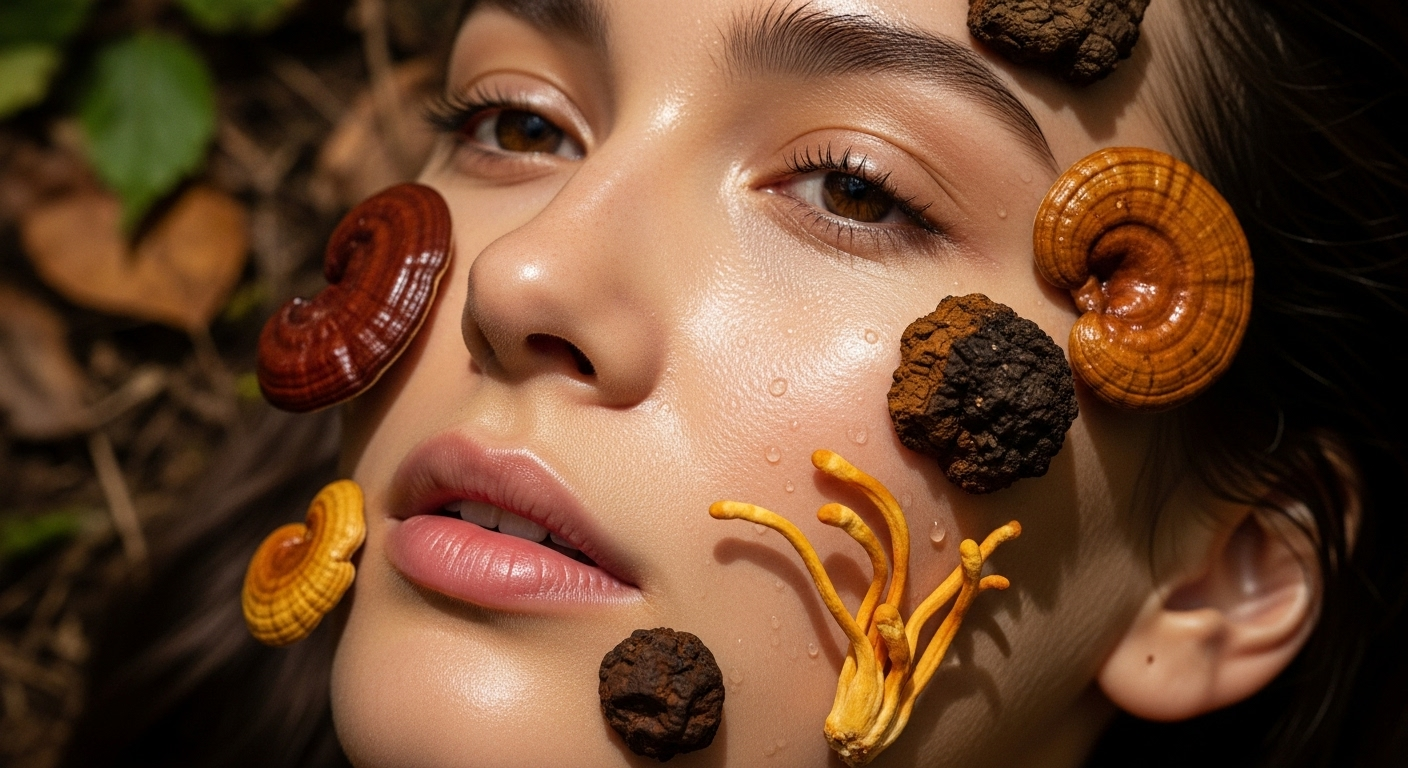Mushroom Makeup: Nature's Palette on Your Face
The world of beauty is constantly evolving, with innovative trends emerging from unexpected sources. One of the most intriguing developments in recent years is the rise of mushroom-based makeup. This fascinating fusion of nature and cosmetics is revolutionizing the beauty industry, offering a sustainable and skin-nourishing alternative to traditional makeup products. Mushroom makeup harnesses the power of various fungi species, transforming them into vibrant pigments and beneficial skincare ingredients. As consumers become increasingly conscious of the environmental impact and health effects of their beauty choices, mushroom makeup is poised to become a major player in the cosmetics market. This article delves into the world of mushroom makeup, exploring its origins, benefits, and potential to reshape the beauty landscape.

The key to mushroom makeup lies in the diverse array of compounds found in different mushroom species. These include polysaccharides, beta-glucans, antioxidants, and natural pigments such as melanin. Each mushroom species offers a unique profile of beneficial ingredients, allowing formulators to create a wide range of products tailored to different skin types and beauty needs.
From Forest Floor to Makeup Bag
The process of transforming mushrooms into makeup involves several sophisticated steps. First, suitable mushroom species are carefully selected based on their pigment content and beneficial properties. Common species used in mushroom makeup include Reishi, Chaga, and various colorful bracket fungi.
Next, the mushrooms undergo a specialized extraction process to isolate the desired compounds. This may involve techniques such as supercritical CO2 extraction or enzymatic breakdown, depending on the specific ingredients being targeted. The resulting extracts are then purified and stabilized for use in cosmetic formulations.
One of the most exciting aspects of mushroom makeup is the potential for creating a wide range of natural, eco-friendly pigments. By manipulating growing conditions and extraction methods, formulators can coax an impressive spectrum of colors from various mushroom species, ranging from soft earth tones to vibrant hues.
The Skin-Nourishing Power of Fungi
Beyond their role as natural colorants, mushrooms offer a wealth of skin-beneficial properties that make them ideal ingredients for multifunctional makeup products. Many mushroom species are rich in beta-glucans, polysaccharides that have been shown to have powerful moisturizing and skin-soothing effects. These compounds can help to improve skin hydration, reduce inflammation, and promote a healthy skin barrier.
Mushrooms are also potent sources of antioxidants, which can help to protect the skin from environmental stressors and premature aging. Some species, such as Tremella fuciformis (snow mushroom), have been found to have impressive moisture-retention properties, rivaling hyaluronic acid in their ability to hydrate the skin.
Additionally, certain mushroom extracts have been shown to have skin-brightening effects, helping to even out skin tone and reduce the appearance of dark spots. This makes mushroom-based makeup particularly appealing for those seeking a natural alternative to synthetic skin-lightening ingredients.
Sustainability and Ethical Sourcing
One of the most compelling aspects of mushroom makeup is its potential for sustainability. Mushrooms are fast-growing and can be cultivated in a variety of environments, including on agricultural waste products. This makes them a highly renewable resource compared to many traditional cosmetic ingredients.
Moreover, the cultivation of mushrooms for cosmetic use can provide economic opportunities for rural communities and promote sustainable forest management practices. Many companies developing mushroom-based makeup are prioritizing ethical sourcing and fair trade practices, ensuring that their products benefit both consumers and producers.
Challenges and Future Developments
While mushroom makeup holds great promise, there are still challenges to overcome. Ensuring consistency in color and quality across different batches of mushroom-derived pigments can be difficult, as natural variations in growing conditions can affect the final product. Additionally, some consumers may be hesitant to embrace fungal-based cosmetics due to misconceptions or concerns about allergies.
However, ongoing research and development in the field are addressing these issues. Scientists are working on advanced cultivation techniques to produce more consistent mushroom crops, while cosmetic chemists are refining formulations to maximize stability and performance.
Looking to the future, we can expect to see an expansion of mushroom-based beauty products beyond makeup. Skincare, haircare, and even nail products incorporating mushroom extracts are likely to become more prevalent. As our understanding of the beneficial properties of different mushroom species grows, so too will the range of innovative beauty solutions they inspire.
Embracing the Fungal Revolution
Mushroom makeup represents more than just a novel trend in the beauty industry; it signifies a shift towards more sustainable, nature-derived cosmetics that offer genuine benefits for the skin. As consumers become increasingly aware of the impact of their beauty choices on both their health and the environment, products that can deliver on performance while aligning with eco-conscious values are set to thrive.
The rise of mushroom makeup also highlights the untapped potential of the natural world in solving modern beauty challenges. By looking to nature’s own laboratory, cosmetic scientists are uncovering innovative solutions that can revolutionize the way we approach beauty and skincare.
As this exciting field continues to evolve, we can look forward to a future where our makeup bags are filled with products that not only enhance our appearance but also nourish our skin and support the health of our planet. The fungal revolution in beauty is just beginning, and its potential is as vast and varied as the mushroom kingdom itself.





